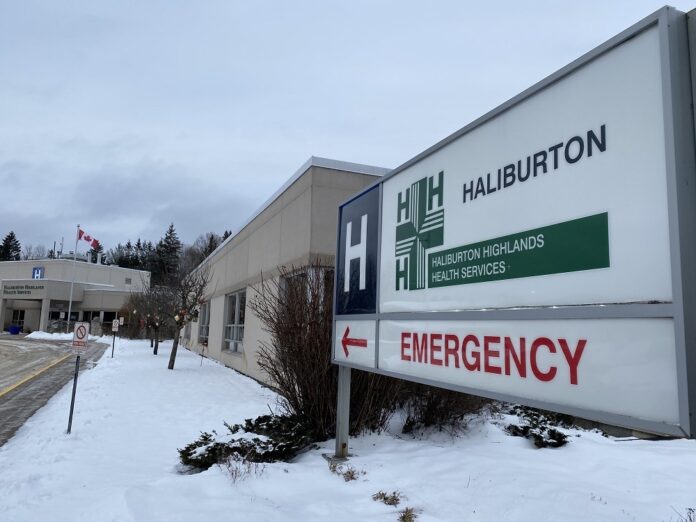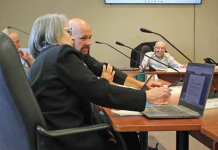A new $3.1 billion joint federal and provincial investment in Ontario’s health care system should be welcome news to everyone in Haliburton County, according to Haliburton Highlands Health Services executives.
On Feb. 9, prime minister Justin Trudeau and premier Doug Ford said the money will help increase access to family doctors, reduce wait times for appointments and emergency response, and allow hospitals to hire more healthcare workers.
It’s part of a wider, $200 billion 10-year commitment, including $46.2 billion in new money, the federal government made in 2023 to address funding shortfalls across provincial and territorial health systems.
Jennifer Burns-West, vice president of clinical and community programs and chief nursing executive at HHHS, said HHHS will use the extra funding to support frontline care, place resources where patients need it most, and support staffing pressures. It was not disclosed how much the organization would receive.
“Optimizing health and wellbeing in Haliburton County is our primary objective. Every day, our staff, physicians and volunteers go above and beyond to care for the needs of our patients, so this funding will help provide them with the resources they need to continue,” Burns-West said.
Haliburton-Kawartha Lakes-Brock MPP Laurie Scott’s office did not respond to questions submitted by The Highlander, instead forwarding the request to health minister Sylvia Jones. Hannah Jensen, ministry spokesperson, said the province’s contribution is being split over three years and will build on initiatives the Ontario government is already working on through its Your Health: A Plan for Connection and Convenient Care initiative.
Jensen noted new primary care teams will be established to allow Ontarians without a family doctor to connect with one. There will also be money to hire more nurse practitioners, nurses, pharmacists, and social workers.
“This will help reduce backlogs for surgeries and wait times in emergency rooms, while improving access to care for patients without a family doctor, especially in rural, remote and underserved areas,” a Feb. 9 press release states.
Scott has previously told The Highlander she considers Haliburton County to be a remote and underserved area.
Enrollment in health care education programs is also being expanded, with more than 700 spots – including over 70 in northern Ontario, expected in 2024. The agreement will also make it easier for internationally trained doctors and health professionals to practise in Ontario, removing barriers to foreign credential recognition, simplifying licensing processes, and increasing program access for highly educated and skilled professionals.
Kimberly Moran, Ontario Medical Association CEO, noted approximately 2.3 million people in Ontario don’t have a family doctor in 2024, with that number expected to nearly double over the next two years. “Everyone in Ontario deserves to have access to a family doctor,” Moran said.
HHHS ‘faces pressure’
Martin Mazza, interin chief financial officer at HHHS, said specific details over funding amounts the local hospital expects to receive will be known later this year. He noted the organization was still in a hole financially.
“All of us in our day-to-day lives see the impact of rising costs… HHHS faces considerable inflationary pressure with its ongoing budgetary responsibilities,” Mazza said.
Hospital president and CEO, Veronica Nelson, told The Highlander in a December 2023 interview HHHS had been focusing on its organizational deficit, which was down to around $1.7 million as of Sept. 30 last year compared to $4.2 million at the end of the 2022/23 fiscal year in April.
She attributed much of that to a decreased reliance on agency staff. The organization peaked in May, with 160 agency RN and RPN shifts, though that number had dropped to approximately 80 shifts per month by the end of the year.





